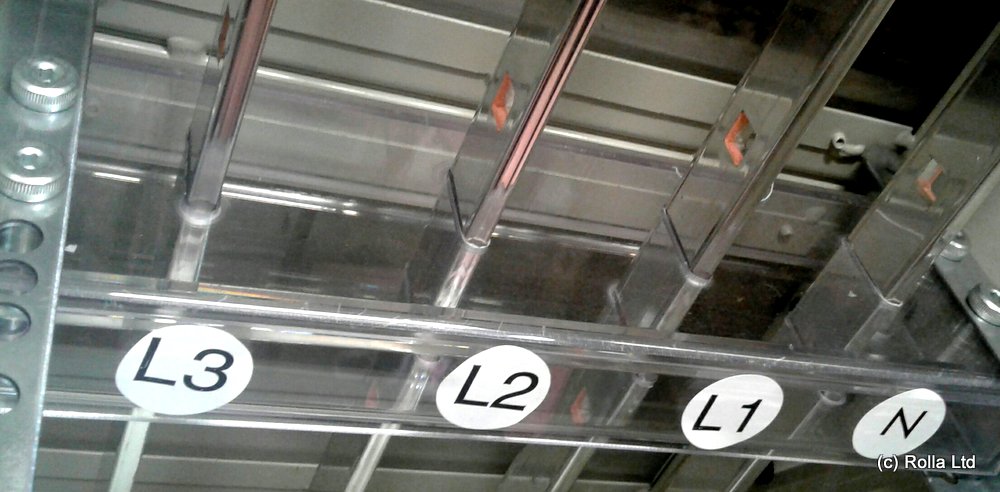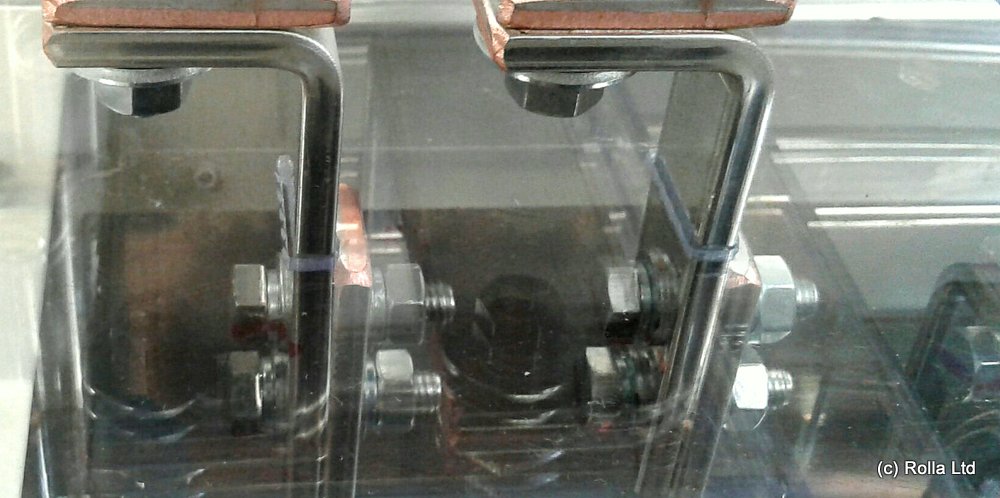Rolla Arc Safety
All Rolla systems have been designed and built for more than 40 years to provide maximum integrity and operator safety under the most onerous conditions. Some of this is proven during short circuit tests to IEC 61439-2 (external faults), but there is always the possibility of a short circuit initiated inside the enclosure (an arc fault).
Faults of any kind within a switchboard are rare but when they do occur are often caused by the operators own actions or by other equipment failing such as switching devices, capacitors or bad connections. No devices are fitted within the busbar chamber of course and the form 4 segregation which is a standard feature of all Rolla systems provide a high degree of isolation (and personnel protection) for such events.
There is currently no agreed standard for testing or certifying internal arc faults, only the IEC technical report IEC/TR 61641:2014 providing guidance on how such testing may be carried out. This contains a note stating:- “The recommendations of this report are not acceptable in the USA, nor in Canada, nor in the United Kingdom” (Annexe B)).
As a result of this, along with the fact that testing is not likely to be representative of reality in the way the fault is initiated or the precise location, we have not carried out testing to IEC/TR 61641.
Instead the approach favoured in the UK is to reduce the likelihood of a fault occurring rather than deal with the effects afterwards. This can be done by several methods including:-
1. No live working (human error being a major problem)
2. Regular maintenance (cleaning and checking)
3. Proper and detailed risk assessments before any work
4. Carrying out arc flash studies and act on recommendations
5. Replacement of outdated switchgear
The large air gaps we use (based on the recommendations of the old BS159:1957 i.e. 1” between phases, 3/4” to earth) also ensure that the possibility of an arc is minimised and will not be sustained once the initiator has been vapourised.
We know that an arc, once initiated, will travel from the bottom to the top of a vertical section (~2m) in around 3mS – far too fast for any incomer device to react or limit the fault in any way even if triggered by optical sensors (but of course this is quicker than waiting for the overload to sense the fault).
Since 1996 our KATTA® busbar mounting has been in use around the world. This is a fully recyclable product, manufactured entirely in-house, with other benefits as described below.

The design of our KATTA® busbar mounting, as can been seen in the picture above, provides some resistance to the travel of the arc and significantly slows it down as it has to pass around the outside of the mounting (compare this to traditional clamping designs which provide a slot in the centre, directly between each busbar).
Our Utility Control Centre (UCC) was also designed to have full segregation between horizontal and vertical busbars such that faults are even less likely to propagate between sections. This is a picture at the top of the vertical risers where they pass through the flame barrier:-
